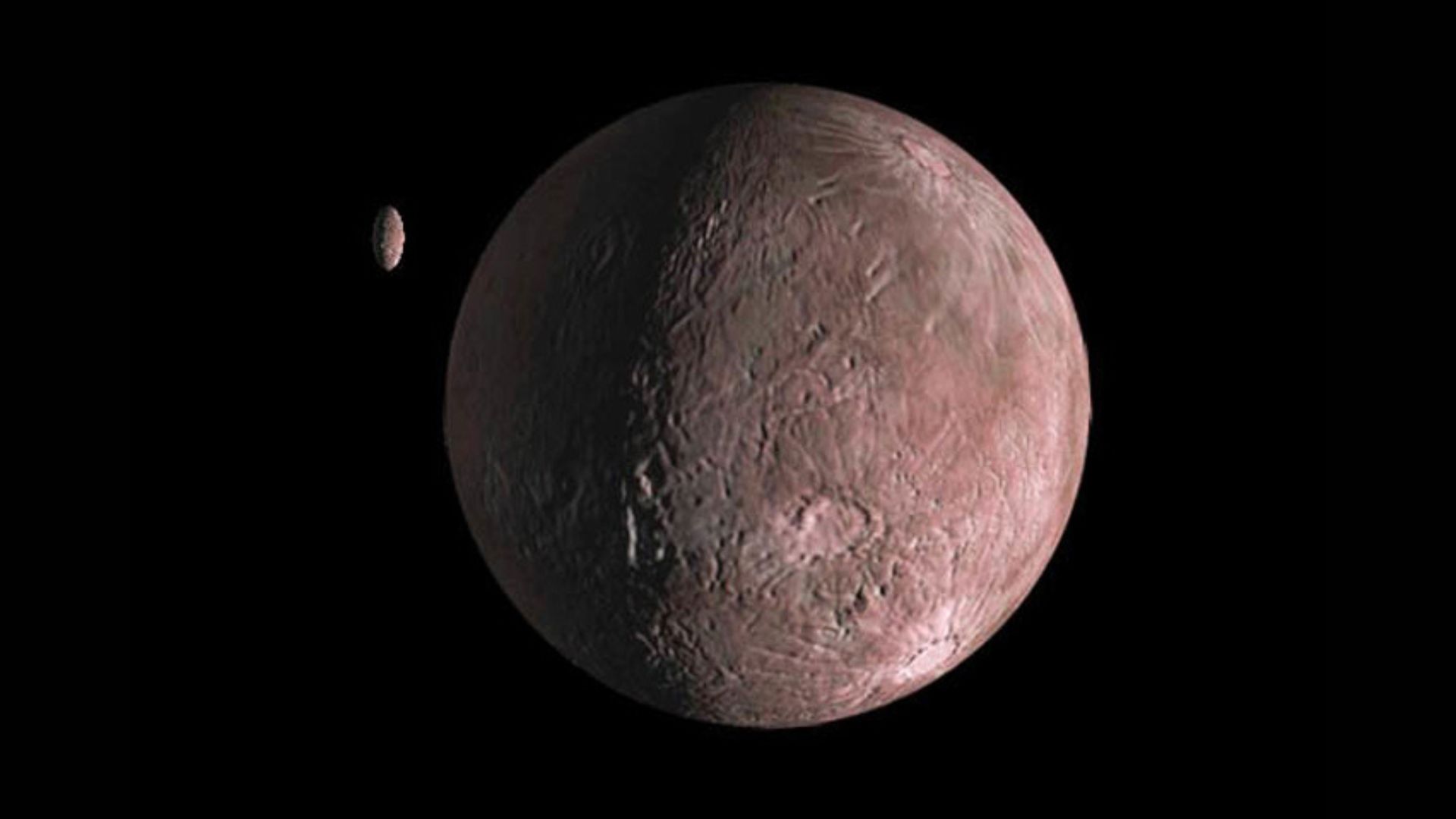A recently found quasi-moon has been observed circling Earth, providing astronomers with a unique view into the intricate dynamics of near-Earth objects. This small celestial body questions traditional perceptions of our planet’s nearby cosmic surroundings.
El hallazgo, logrado por un equipo de astrónomos de diversos países, representa un avance importante en la investigación del espacio cercano a la Tierra. A diferencia de las lunas convencionales, que siguen trayectorias estables y prolongadas alrededor de planetas, un cuasi-satélite es un objeto cuya órbita es momentáneamente afectada por la gravedad terrestre. Estos compañeros efímeros pueden orbitar el planeta durante meses o incluso años antes de ser desviados por el Sol u otras fuerzas celestes. El cuasi-satélite recientemente identificado, aunque pequeño, brinda información valiosa sobre dinámica orbital, posibles oportunidades de recursos y estrategias de defensa planetaria.
For years, researchers have been listing asteroids and nearby Earth objects to gain a deeper insight into their paths and the potential dangers they present. Nevertheless, spotting a quasi-moon is rarer and underscores the ever-changing nature of Earth’s gravitational surroundings. Studying these bodies not only enhances scientific understanding but also stimulates public enthusiasm for astronomy and space exploration.
Comprehending quasi-moons and their importance
Quasi-moons, occasionally called transient satellites, belong to a distinct class in space dynamics. In contrast to the Moon, which maintains a stable trajectory for billions of years, quasi-moons have weak gravitational ties to Earth and frequently show intricate orbital behaviors. These objects generally come from the asteroid belt or various regions of the solar system and are temporarily held by Earth’s gravitational pull.
The recently discovered quasi-moon demonstrates many characteristics typical of these ephemeral companions. Researchers noted its small size, irregular shape, and unusual orbital path, which alternates between approaching Earth closely and drifting farther away. Its temporary nature makes it a subject of interest because it illustrates the gravitational interplay between the Earth, the Moon, and the Sun. By studying these patterns, scientists can improve models that predict orbital behavior and better understand how small celestial bodies interact with planets over time.
Although quasi-moons are typically not deemed risks to Earth, their existence holds practical significance. Certain researchers suggest that these celestial objects might act as interim bases for upcoming space endeavors, possibly providing locations for scientific investigation or resource collection. Meanwhile, others perceive them as natural testing grounds for evaluating orbital forecasting techniques, improving spacecraft guidance, or developing methods for asteroid redirection.
How the discovery was made
The new quasi-moon was detected using a combination of ground-based telescopes and space observation technologies. Astronomers employed advanced imaging techniques and precise tracking algorithms to distinguish the object from the vast number of nearby asteroids. Its size, estimated to be only a few dozen meters in diameter, required careful observation to confirm its temporary orbit around Earth.
The finding highlights the growing complexity of astronomical observation techniques. The capability to recognize tiny, swiftly-moving entities close to Earth shows progress in both equipment and simulation technology. Through the integration of detailed imaging and foresight algorithms, researchers can now detect fleeting satellites that would have been overlooked merely ten years back. This achievement emphasizes the need for ongoing support of programs dedicated to tracking objects near Earth.
Alongside advancements in technology, this discovery also depended on global teamwork. Observatories from various continents worked together, exchanging data and perfecting calculations to verify the object’s path. This cooperative effort highlights the worldwide aspect of contemporary astronomy, where breakthroughs frequently rely on alliances among scientists and organizations collaborating.
Consequences for the study of planets and space travel
The identification of a quasi-moon near Earth carries implications for both fundamental science and practical applications. For planetary scientists, it offers a rare opportunity to study a natural object in close proximity, providing insight into composition, reflectivity, and orbital dynamics. Studying such bodies can reveal details about the formation and evolution of small celestial objects, as well as their interactions with larger planetary systems.
From a space exploration perspective, quasi-moons present potential targets for missions that would be logistically simpler than traveling to distant asteroids. Their proximity to Earth means that spacecraft could reach them with lower fuel requirements, test technologies for asteroid mining, or gather samples that might inform broader questions about solar system history. The temporary nature of these moons, however, requires precise timing for mission planning, emphasizing the need for continued observation and predictive modeling.
Furthermore, temporary satellites aid in comprehending the threats linked with objects near Earth. While the majority are minor and unlikely to inflict major harm if they were to penetrate Earth’s atmosphere, analyzing their trajectories can enhance the accuracy of risk evaluation models. Understanding the way gravitational forces capture and liberate these bodies assists astronomers in forecasting possible dangers from future asteroids and comets that could intersect Earth’s path.
Interest from the public and learning possibilities
The notion of uncovering a quasi-moon naturally intrigues the public. Unlike remote planets or distant galaxies, these celestial bodies inhabit a part of space that feels near and reachable. The concept that Earth momentarily accommodates small satellites ignites interest and offers educators an effective way to captivate students in astronomy and physics.
Comunicadores científicos han subrayado la oportunidad de ilustrar conceptos como la gravedad, la mecánica orbital y la naturaleza dinámica del sistema solar a través de ejemplos como los cuasi-satélites. Al presentar estos descubrimientos de manera comprensible, los científicos pueden motivar a las generaciones futuras de astrónomos e ingenieros. El interés del público también respalda la financiación y el apoyo a la investigación espacial, destacando los beneficios sociales más amplios de la exploración científica.
The interest in quasi-moons extends beyond just scholarly pursuits. Media reports and societal interaction play a role in framing human space exploration and the possibilities for tech advancements. Narratives about these transient satellites create a connection between sophisticated scientific studies and the public, making the field of space research more accessible and thrilling.
Observation and upcoming studies
Astronomers plan to continue tracking this newly discovered quasi-moon over the coming months to observe its trajectory, rotational dynamics, and eventual departure from Earth’s gravitational influence. Continuous monitoring will help refine models of quasi-moon behavior and contribute to broader knowledge of near-Earth space.
Future investigations might delve deeper into the physical attributes of quasi-moons. Using devices like spectrometers, researchers could examine the surface composition, aiding scientists in assessing if these bodies share traits with other near-Earth asteroids or have distinct features. Such information could support upcoming missions and possibly pinpoint objects ideal for scientific or commercial uses.
The finding highlights the significance of remaining watchful in observing the near-Earth surroundings. With advancements in technology, it is probable that astronomers will identify more temporary companions, contributing to a deeper comprehension of Earth’s position in the solar system. Every new object acts as an example in gravitational dynamics, supplying information that might impact core science as well as real-world uses, such as strategies for planetary defense.
The discovery of an unrecognized quasi-moon rotating around Earth emphasizes the intricate and active nature of our galactic vicinity. These transient moons offer distinct chances to examine orbital dynamics, captivate the public’s interest in space, and investigate potential uses for space exploration missions. Despite their modest dimensions, they hold considerable scientific importance, imparting insights about gravitational forces, objects close to Earth, and the continually shifting interactions among celestial entities.
As scientists keep an eye on this recent finding, it reminds us that our planet’s surroundings go beyond what we can see in the sky. Even small, short-lived neighbors can shed light on our knowledge of the solar system, linking observation, experimentation, and discovery. The continuous research on quasi-satellites highlights the diversity of space close to Earth and the lasting importance of curiosity-driven exploration.





